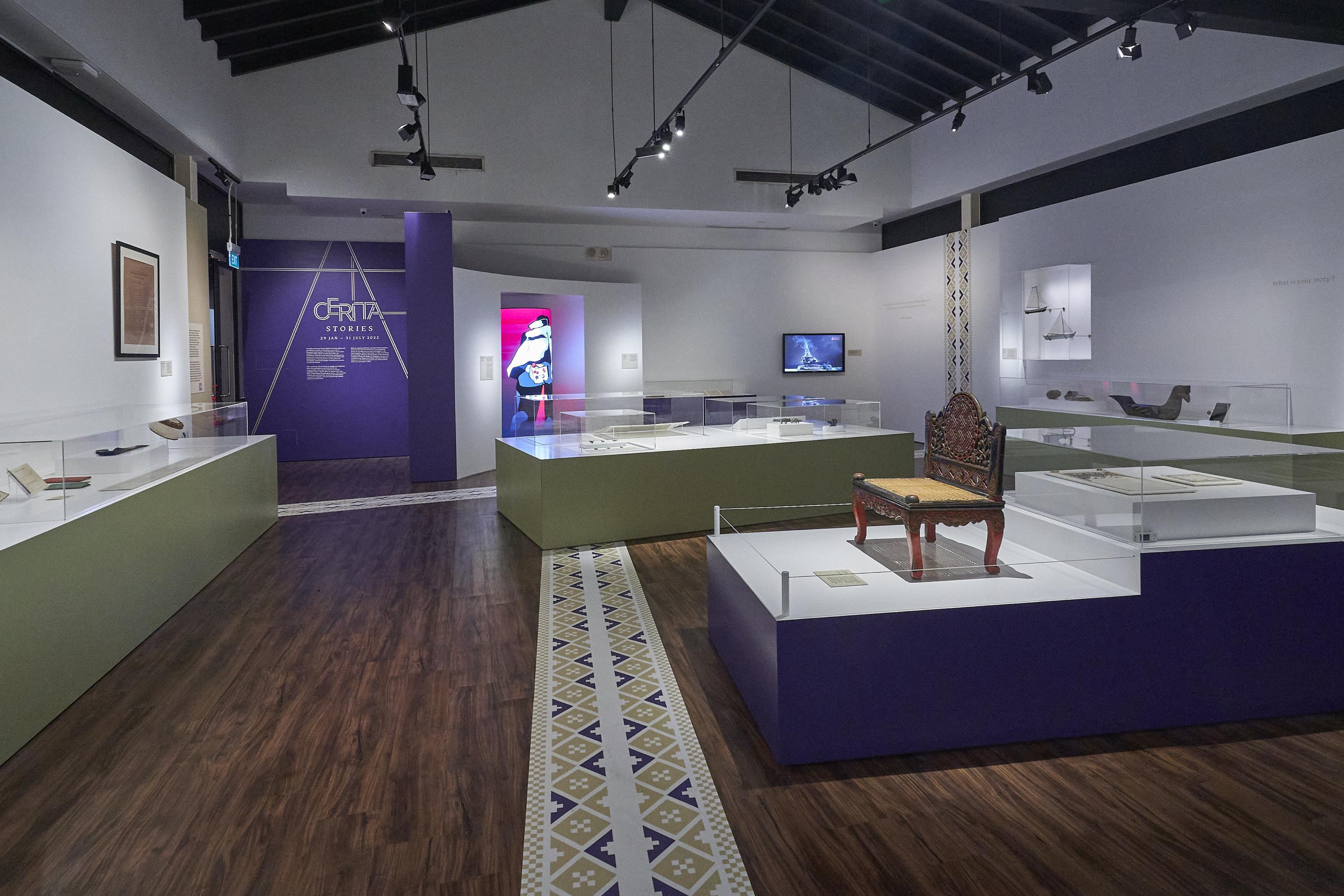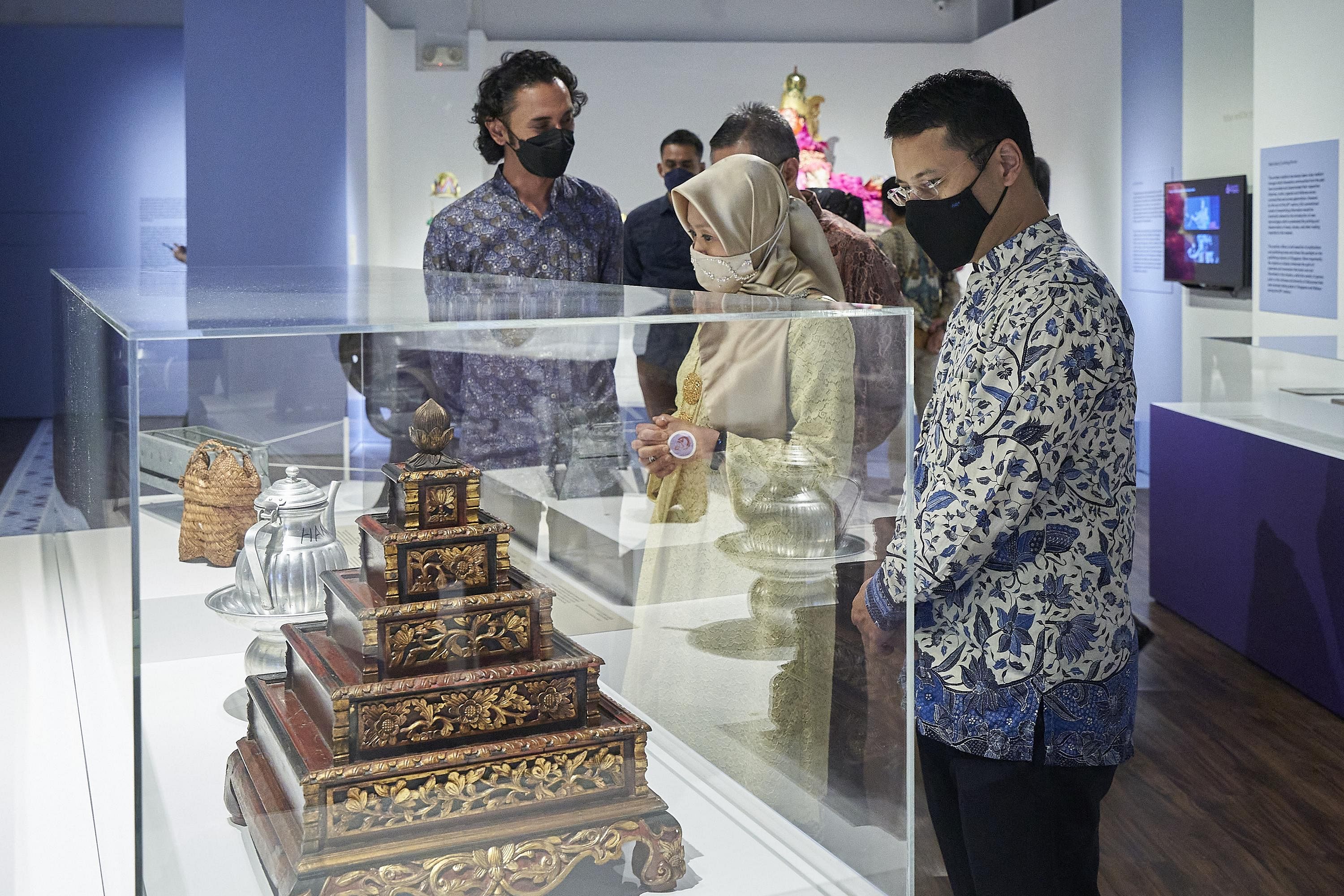A king's seal and a football medal: Malay Heritage Centre exhibition tells stories that bind
Sign up now: Get ST's newsletters delivered to your inbox

The Malay Heritage Centre inaugurated the exhibition titled Cerita on Jan 28, 2022.
PHOTO: MALAY HERITAGE CENTRE
Follow topic:
SINGAPORE - With song, dance and the clang of a gong, the Malay Heritage Centre's last exhibition before it shuts for revamping was launched on Friday (Jan 28).
A two-hour ceremony held on its Kampong Glam grounds inaugurated the exhibition titled Cerita ("stories" in Malay), a retrospective of the tales the centre has told since its reopening in 2012.
Exhibits tell the story of Malays in Singapore and their inextricable links to the Nusantara, the Malay archipelago, beginning with the seal of Tengku Hussain Shah, who was installed by the British in 1819 as the king of Johor and through whom Singapore was ceded to the colonial power.
The disparate tale spans Kampong Glam's glory years as a seat of Malay royalty to its days as a hub for the thriving Hajj industry.
A printing press from the manufacturer Chandler & Price on display is a nod to Kampong Glam's history as a Jawi publishing centre.
Certain everyday objects will conjure up times past for some visitors - items that curators hope will spark conversations between young and old.
These include Fandi Ahmad's 1994 Malaysia Cup football gold medal, which the national striker has loaned the centre. This highlights an iconic moment in Singapore's sporting history, when thousands of Singaporeans drove up to Kuala Lumpur with their friends and family to catch the final and eventual triumph.
A model of a kolek, or a sailboat, also harks back to the 19th century. They were then a common sight around the coastal areas of Singapore, where races were regularly held off Siglap, Pasir Panjang, Katong and the offshore islands. The New Year Regatta held at the waterfront off the Padang also drew thousands at the time.
At the launch of Cerita, National Development Minister Desmond Lee said the Malay Heritage Centre has played a key role in telling the Malay community's stories to the wider Singaporean community and the region since its founding.
"Whether passed down through written and oral histories, artefacts or contemporary methods such as social media posts, tweets and TikTok videos - our stories help to shape and affirm our cultural identities, and chronicle the beliefs and practices of our diverse communities.
"The Malay Heritage Centre's programmes are anchored in an unwavering belief in sharing stories - from personal anecdotes, to community and even national accounts."

As the centre prepares to close in the second half of the year, a Kampong Glam Alliance formed by stakeholders of the area is coming up with a plan to create "a more sustainable and resilient Kampong Glam", he said.
"In the Kampong Glam Alliance's discussions, community partners have also emphasised the importance of telling the right stories, to transmit and sustain the values of the area and the community," Mr Lee added.
But the "right stories" do not necessarily need to be told traditionally.
The legend of Hang Nadim and the garfish attack from the Malay Annals, Sejarah Melayu, is told through 10 different digital animation videos.
Created by 50 students from Nanyang Polytechnic's School of Interactive and Digital Media, each is a different take on the folk classic where Singapore - then called Temasek - was attacked by garfish that leapt out of the water to pierce anyone on the seashore.
Thousands died before a Malay boy advised the ruler of Temasek to build a barrier with banana stems to trap the garfish by their snouts, saving the island.
Asked if using TikTok to tell stories is on the cards, the centre’s general manager Asmah Alias said: “We are certainly open to using social media to continue telling stories. In fact, some of the content on our Facebook page such as videos featuring various members of the community sharing their family recipes already does that.”
In the pipeline is another series that will feature Malay practitioners and their art forms, which will be posted on the centre’s social media pages soon.
Cerita opens on Saturday and will run till July 31, after which the centre will close for a scheduled revamp for at least two years.
There will also be a two-week Malay CultureFest that looks back at the centre's work in the past decade, and celebrates respected cultural pioneers such as dancer Som Said, musician Ramli Sarip and the late bangsawan (Malay opera) scriptwriter Hamid Ahmad.

